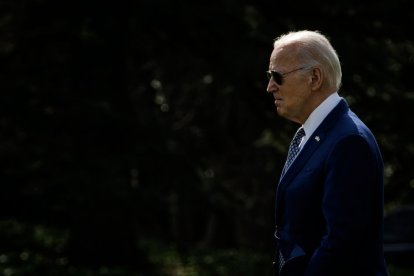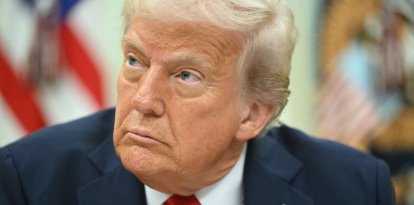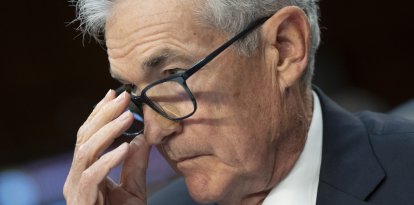More debt and less economic freedom: Biden's socialist economy
The Democratic president received two failing grades ahead of his re-election year.

ZUMAPRESS.com / Cordon Press
Joe Biden was inaugurated as president of the United States in January 2021. During the campaign, he promised to appeal to moderation, unite the country, and right an economy that had been hit by the pandemic. However, in addition to unleashing a border crisis, the Democrat increased the national debt and placed the country in the worst position of economic freedom since 1995.
With the presidential elections getting closer, President Biden also hopes to be able to defeat Donald Trump, the favorite to win the Republican nomination, in what would be the seventh electoral rematch in the history of the United States.
Free fall into economic freedom
Year after year, the Heritage Foundation produces the Index of Economic Freedom, which evaluates countries on different indicators and then gives them a final score and classifies them as ‘free,’ ‘mostly free,’ ‘moderately free,’ ‘mostly not free.” and ‘repressed.’
The United States used to be at the top of the ranking, although, under the Biden administration, it has fallen to its worst position since 1995.
“Big-government policies have eroded limits on government. Public spending continues to rise, and the regulatory burden on business has increased. Restoring the U.S. economy to ‘free’ status will require significant changes to reduce the size and scope of government. Over the years, unchecked deficit spending and government debt have accelerated, and inflation has undercut economic livelihood. Uncertainty and poor policy choices have left the U.S. economic outlook in flux,” the Heritage Foundation explained about the country’s situation.
National debt: “The outlook is more dangerous and discouraging than ever”
“I place economy among the first and most important virtues, and public debt as the greatest of dangers to be feared. To preserve our independence, we must not let our rulers load us with perpetual debt,” said Thomas Jefferson, as a warning for the present and future.
However, the former president would not be pleased to see the latest data on the national debt, that is, what the United States owes its creditors. The figure was released at the end of February, and it falls somewhere between alarming and catastrophic. According to the Treasury Department, the national debt amounts to $34,332,006,626,320.48.
The number is even more catastrophic when compared to what the United States owed about 40 years ago when the national debt was $907 billion.
The Congressional Budget Office is also not very encouraging with regards to what may happen in the future, since estimates are that the national debt will grow to $54 trillion in the next decade, partly due to an aging population and federal health care costs. Even higher interest rates are aggravating the fiscal situation.
When calculating the debt per capita, in other words, what corresponds to each inhabitant for the debt contracted by the government, each American owes $103,409.
The high figure caught the attention of Olivier Blanchard, senior researcher at the Peterson Institute for International Economics. He is also concerned because he does not perceive that the political leadership in Washington wants to fix the situation. “The primary deficits are very large and there’s absolutely no attempt to decrease them in any way, shape or form ,” he recently declared.
“The fiscal path of the U.S. public sector is not sustainable”
Voz Media spoke exclusively with Eugenio Marí, chief economist of the Libertad y Progreso Foundation, who pointed out the sharp increase in debt since 2009.
“The fiscal path of the American public sector is not sustainable. Public debt increased from 35% to 100% of GDP in just 15 years, opposite of administrations that persisted in sustaining the fiscal deficit and financing it with a bond festival. All this seemed inexpensive in a context where the Federal Reserve kept the interest rate close to 0%, but with the normalization of rates and the increase in interest payments, it is becoming clear that this is not the case,” he said.
In turn, the expert ruled out one of the scenarios that projects the national debt to reach 170% of the GDP by 2050, alleging that “the reality is that the United States will hardly be able to reach those levels, but would first have a debt crisis.”
The national debt has only increased over the years during different administrations, adding zeros to the burgeoning figure.
What is the national debt?
Any state in the world has public debt when it spends more than it earns. Now, to patch up that difference, it needs to find some source of financing, so it issues financial assets such as debt securities, like treasury bills or bonds. Of course, you must pay interest to each of the owners of those financial assets.
For example, if the government in question wants to build a dam that fictitiously costs $100,000, it may decide to issue 100 treasury bills worth $1,000 each. Interested investors can buy that debt, and in exchange, they will receive $1,050 within a year, the same as, say, an extra 5% of what they invested.
Now, this country has a public debt of $105,000, which can also be measured as a percentage of its Gross Domestic Product (GDP) to measure how much that debt represents of the total monetary value of all final goods and services produced by year in the country. If that GDP is $200,000, the debt expressed as a percentage of the product is 52% since the debt is divided by the GDP.
RECOMMENDATION





















